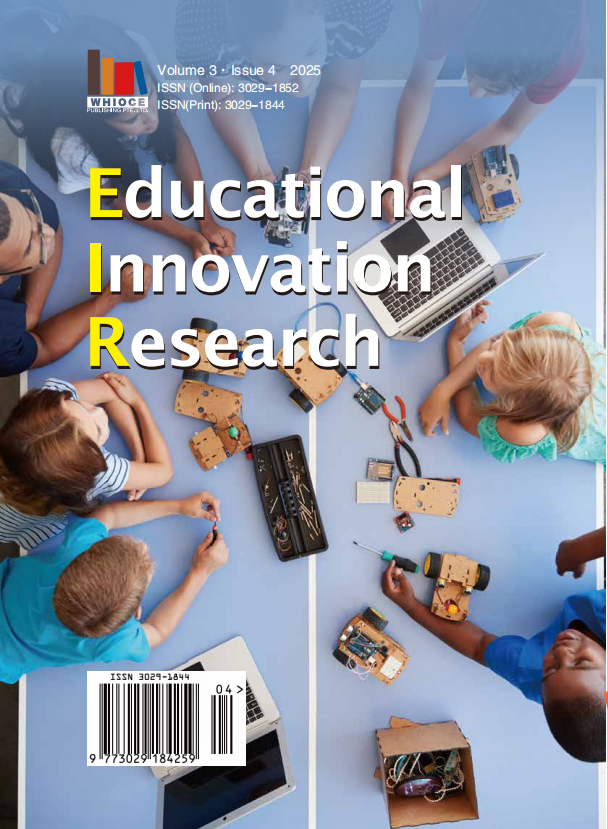Research on the Innovation of Teaching Strategies and Practical Pathways for International Chinese Education from the Perspective of Cultural Integration
DOI:
https://doi.org/10.18063/eir.v3i4.981Keywords:
International Chinese Education, Cultural Integration, Teaching Strategy Innovation, Intercultural Communication, Cultural Dissemination, Immersive LearningAbstract
Based on the core concept of cultural integration, this paper explores the necessity and feasibility of deeply integrating language teaching and cultural dissemination in ICE. By analyzing current challenges such as superficial cultural presentation, monotonous teaching methods, and learners’ difficulties in cultural adaptation, it proposes innovative strategies including creating immersive cultural contexts, project-based cultural inquiry learning, digital empowerment for deepened cultural experience, localized selection of cultural content, and intercultural communication competence-oriented interactive teaching. The implementation pathways and expected outcomes are elaborated with case studies, aiming to provide theoretical references and practical guidance for ICE practitioners, promoting the shift from “language instrumentality” to “language-culture symbiosis”.
References
Confucius Institute Headquarters (Hanban), 2023, Annual Development Report of Confucius Institutes. Confucius Institute Headquarters, Beijing.
Liu X, 2000, An Introduction to Teaching Chinese as a Foreign Language. Beijing Language and Culture University Press, Beijing.
Li Q, 2011, Presentation Methods of Cultural Content and the Effectiveness of Teaching Chinese as a Foreign Language. Language Teaching and Linguistic Studies, 2011(2): 1–8.
Cui X, 2010, Issues of Cultural Teaching in International Chinese Education. World Chinese Teaching, 24(3): 291–299.
Byram M, 1997, Teaching and Assessing Intercultural Communicative Competence. Multilingual Matters, Shanghai.
Fantini AE (Ed.), 2006, Assessing Intercultural Competence. School for International Training, Shanghai.
Chen X, 2000, Qualitative Research Methods and Social Science Research. Educational Science Publishing House, Beijing.
Lantolf J, Thorne S, 2006, Sociocultural Theory and the Genesis of Second Language Development. Oxford University Press, London.
Samovar L, Porter R, McDaniel E, et al., 2017, Communication Between Cultures (9th ed.). Cengage Learning, London.
Coyle D, Hood P, Marsh D, 2010, CLIL: Content and Language Integrated Learning. Cambridge University Press, London.
Wu Y, 2010, Review of Research on the International Dissemination of Chinese. Journal of Yunnan Normal University (Teaching and Research on Chinese as a Foreign Language Edition), 8(5): 1–8.
Wang J, 2007, Research on Cultural Acquisition by Second Language Learners. World Chinese Teaching, 2007(4): 73–83.
Zhang Y, 2004, Research on Cultural Textbooks for Teaching Chinese as a Foreign Language—Also on Principles for Compiling Cultural Textbooks. Chinese Language Learning, 2004(1): 56–61.
Li W, Liu S, 2012, Research on Standards for Chinese as a Second Language Proficiency. Language Teaching and Linguistic Studies, 2012(4): 1–9.
Zheng Y, 2021, The New Ecology of International Chinese Education Empowered by Technology. World Chinese Teaching, 35(4): 435–447.
Jin H, 2004, Ten Principles of Modern Foreign Language Teaching. World Chinese Teaching, 2004(1): 74–81.

